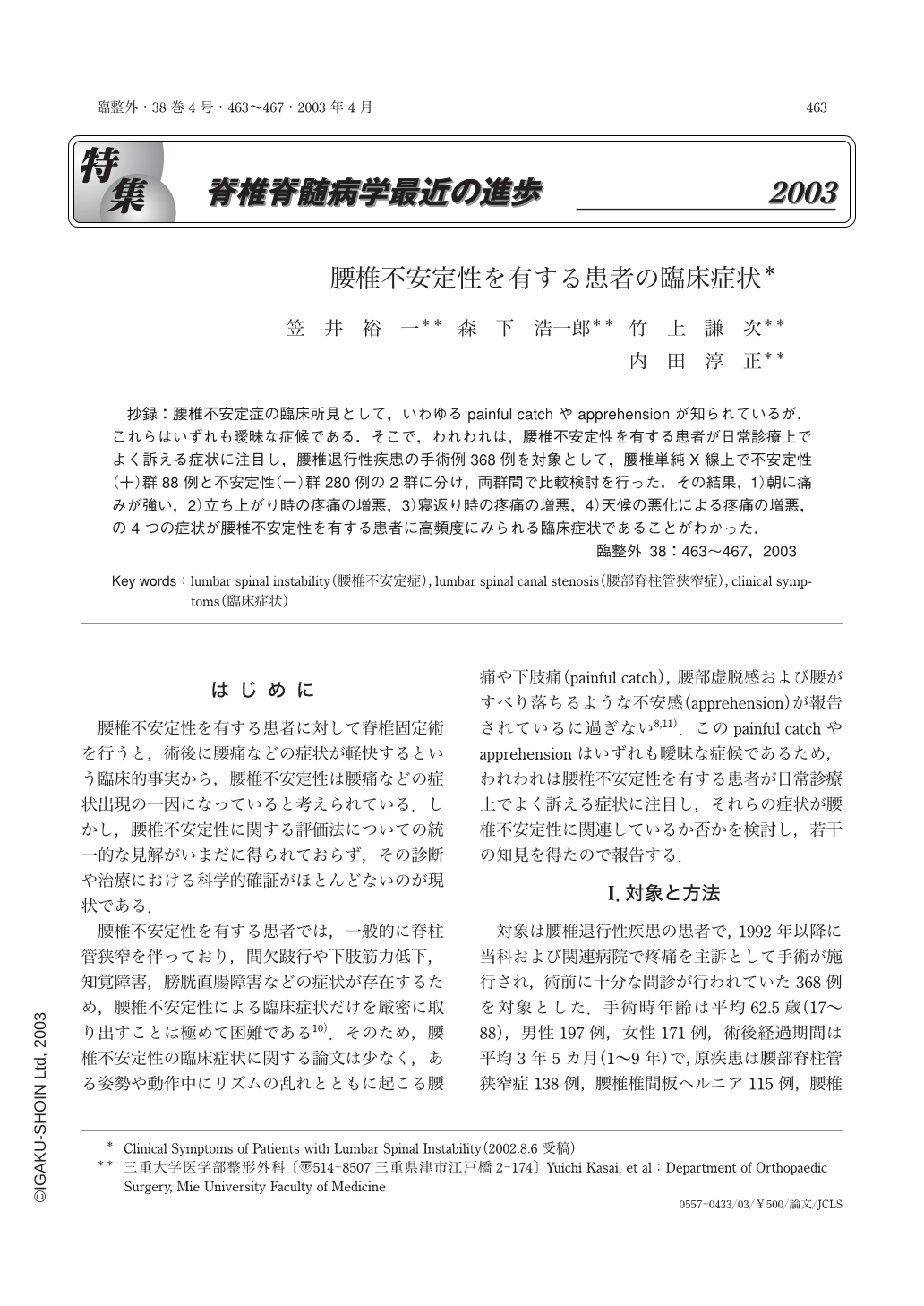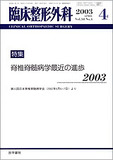Japanese
English
- 有料閲覧
- Abstract 文献概要
- 1ページ目 Look Inside
抄録:腰椎不安定症の臨床所見として,いわゆるpainful catchやapprehensionが知られているが,これらはいずれも曖昧な症候である.そこで,われわれは,腰椎不安定性を有する患者が日常診療上でよく訴える症状に注目し,腰椎退行性疾患の手術例368例を対象として,腰椎単純X線上で不安定性(+)群88例と不安定性(-)群280例の2群に分け,両群間で比較検討を行った.その結果,1)朝に痛みが強い,2)立ち上がり時の疼痛の増悪,3)寝返り時の疼痛の増悪,4)天候の悪化による疼痛の増悪,の4つの症状が腰椎不安定性を有する患者に高頻度にみられる臨床症状であることがわかった.
There have been very few reports on clinical symptoms of patients with lumbar spinal instability. The purpose of this study was to more clearly identify their symptoms. Three hundred sixty-eight patients with degenerative diseases of the lumbar spine were operated on. Their mean age was 62.5 years old (17-88 years) and the mean follow-up period was 3.5 years (1-9 years). We compared between 88 patients with lumbar spinal instability and 280 patients without lumbar spinal instability. The following symptoms were assessed before surgery:location of pain, time of day when most severe, whether exacerbatied by anteflexion, retroflexion, standing up, rolling over, or remaining in a sitting position, and the relation between symptom exacerbation and bad weather. The data were analyzed by the chi-square test, and a p level of<0.05 was accepted as statistically significant. Comparison between patients with and without lumbar spinal instability revealed that those with lumbar spine instability had significantly more severe pain in the morning (p<0.001), and their pain was significantly worsened by standing and rolling over (p<0.001). There was a significant correlation (p<0.001) between symptom exacerbation and bad weather in the patients with lumbar spinal instability. In conclusion, many patients with lumbar spine instability experienced the most severe pain in the morning, and their pain was worsened by standing up, rolling over, and bad weather.

Copyright © 2003, Igaku-Shoin Ltd. All rights reserved.


